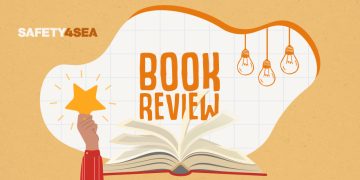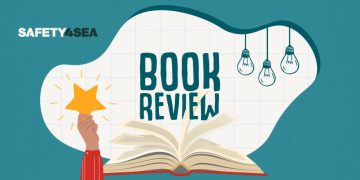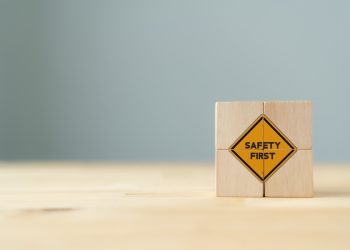The capsizing of Herald of Free Enterprise, only a few minutes after leaving the Belgian port of Zeebrugge on the night of 6th March 1987, killed 193 people onboard. To date, the incident is considered, not only as the deadliest casualty involving a UK-registered ship since 1919, but also as a wake-up call for several safety improvements in this type of vessels. In addition, this catastrophic capsizing became the cause in 1987 for the IMO Assembly to develop the International Safety Management (ISM) Code and for the creation of UK MAIB.
Accident details: At a glance
- Type of accident: Capsizing
- Vessel(s) involved: Herald of Free Enterprise (RoRo Vessel)
- Date: 6 March 1987
- Place: Port of Zeebrugge
- Fatalities: 193
- Pollution: No significant environmental pollution was reported.
The incident
In the afternoon hours of the 6th March 1987, the UK-registered Ro-Ro ferry ‘Herald of Free Enterprise’ sailed in the inner harbor at Belgium’s Port of Zeebrugge, with 80 crew members, 459 passengers, 81 cars, 47 freight vehicles and three other vehicles onboard.
Leaving for Dover, the ‘Herald’ passed the outer mole at 18.24. She capsized about four minutes later. During the final moments, the ferry turned rapidly to starboard and was prevented from sinking totally because her port side took the ground in shallow water.
The ‘Herald’ came to rest on a heading of 136″ with her starboard side above the surface. Water rapidly filled the ship below the surface level trapping people inside the hull.
As a result, 193 people onboard (others say 188) lost their lives, mostly from hypothermia. Many others were injured.
Probable causes
The immediate factor that led Herald to capsize is that it went to sea with its inner and outer bow doors open, the official investigation report reads. Namely, key factors included:
–>Negligence: The assistant bosun has accepted that it was his duty to close the bow doors at the time of departure from Zeebrugge and that he failed to carry it out. While he had opened the bow doors on arrival in Zeebrugge, he went to his cabin after completing his tasks, where he fell asleep and was not awakened by the call announcement on the loudspeakers that the ship was ready to sail. He remained asleep on his bunk until he was thrown out of it when the HERALD began to capsize. Meanwhile, the First Chief Officer and the Captain also failed to check the doors were closed upon departure.
–>Poor communication and lack of directions: The official accident report highlighted that poor relationship between ship operators and shore-based managers contributed to the tragedy. In court hearings, an ambiguity became evident regarding the definition of each one’s duties and responsibilities.
It was the failure to give clear orders about the duties of the Officers on the Zeebrugge run which contributed so greatly to the causes of this disaster,
…the official report reads.
A company official admitted that, long before the 6th March 1987, both the company’s sea and shore staff should have given proper consideration to the adequacy of the whole system relating to the closing of doors on this class of ship with their clam doors.
If they had, they should, and would, have improved the system notably by first improving their instructions, at the very least by introducing in the Bridge and Navigation Procedures Guide an express instruction that the doors should be closed, secondly by introducing a positive reporting system, thirdly by ensuring that the closure of the doors was properly checked and, fourthly, by introducing a monitoring or checking system.
–>Pressure to leave the berth: A significant question on the aftermath of the incident was, why could not the loading officer remain on G deck until the doors were closed before going to his harbour station on the bridge? That operation could be completed in less than three minutes. However, it was revealed that the officers always felt under pressure to leave the berth immediately after the completion of loading.
–>Ship design: No. 12 berth at Zeebrugge was a single level berth, not capable of loading both E and G decks simultaneously, as at the berths in Dover and Calais for which the ship was designed. The ramp at Zeebrugge was designed for loading on to the bulkhead deck of single deck ferries. In order to load the upper deck of the HERALD, trim ballast tanks Nos. 14 and 3 were filled.
–>Squat Effect: Reports attribute the incident to a hydrodynamic phenomenon known as the Squat Effect. Under this phenomenon, a ship moving quickly in shallow water creates an area of lowered pressure, shifting the ship closer to the seabed than would otherwise be expected. This means that the water that should normally flow under the hull encounters resistance due to the close proximity of the hull to the seabed and the ship is pulled down.
[/two_third_last]
Liability
Seven people involved at the company were charged with gross negligence manslaughter, and the operating company was charged with corporate manslaughter.
The case collapsed but it set a precedent for corporate manslaughter being legally admissible in an English court.
The Captain and Chief Officer were suspended from duty.
Lessons learned
A general culture of poor communication in the owner company was highlighted soon after the accident. In this respect, the Court stressed the need for:
- Clear and concise orders.
- Strict discipline.
- Attention at all times to all matters affecting the safety of the ship and those onboard. There must be no “cutting of corners”.
- The maintenance of proper channels of communication between ship and shore for the receipt and dissemination of information.
- A clear and firm management and command structure.
Additionally, shortly after the accident, the UK called IMO to amend SOLAS, 1974. Starting from April 1988, the MSC adopted SOLAS amendments, including among others:
- a new regulation requiring indicators on the navigating bridge for doors which, if left open, could lead to major flooding
- a new regulation requiring monitoring of special category and ro-ro spaces to detect undue movement of vehicles in adverse weather, fire, the presence of water or unauthorized access by passengers whilst the ship is underway.
- provision of supplementary emergency lighting for ro-ro passenger ships.
- the so-called “SOLAS 90” standard, relating to the stability of passenger ships in damaged condition.
- a new regulation requiring cargo loading doors to be locked before the ship proceeds on any voyage and to remain closed until the ship is at its next berth.
Notwithstanding the fact that several measures were taken following the accident, it cannot be ignored that a lot of fatalities would have been avoided if safety culture had been built into routine operational procedures.
Explore more by reading the official investigation report:
LEARN FROM THE PAST: Read in this series
Did you know?
- The accident caused the highest death toll of any peacetime maritime disaster involving a British ship, since the sinking of HMY Iolaire on 1 January 1919 near Stornoway, where at least 205 perished of the 280 onboard.
- Film director Krzysztof Kieślowski was criticised for using footage of the disaster in his film ‘Three Colours: Red’, although it is unclear if he actually did.
- A stained-glass window at St Mary’s Church in Dover pays tribute to those who died on the Herald of Free Enterprise.
- Australian businessman Maurice de Rohan, who lost his daughter and son-in-law in the tragedy, founded Disaster Action, a charity which assists people affected by similar events.
- One of the outcomes of the investigation of this accident was the formation of UK MAIB in 1989.
















































































































Quite interesting to recap the events and the consequences of what happened that day on departure from Port of Zeebrugge.
It reminds me of the sad sinking of the ferry ESTONIA en route Tallinn – Stockholm in September 1994.
Unfortunately this vessel was never salvaged – although not impossible to do so – in order to identify and collect passengers and crew lost.
Furthermore, the actual cause of the sinking was never properly investigated and analysed. Thus a vivid flora of speculations and conspiracy theories were borne that are still alive this day.
Swedish authorities and politicians, in their ignorance, made everything possible to hinder a proper process of investigation into the possible reason/s of this disaster that resulted in the loss of 852 individuals.
As an ex Officer and Master of ro/ro-vessels and thereafter a long career as an independent marine surveyor, I never understood, and still don’t understand why this grave mishap with the loss of so many souls and a large ferry wasn’t investigated in full. Instead a deep scar was left with those that lost loved ones never found. What was left is just a bunch of question marks and speculations together with open wounds. A chance to understand, learn and rectify is lost for ever.
Erik Hammarstrom